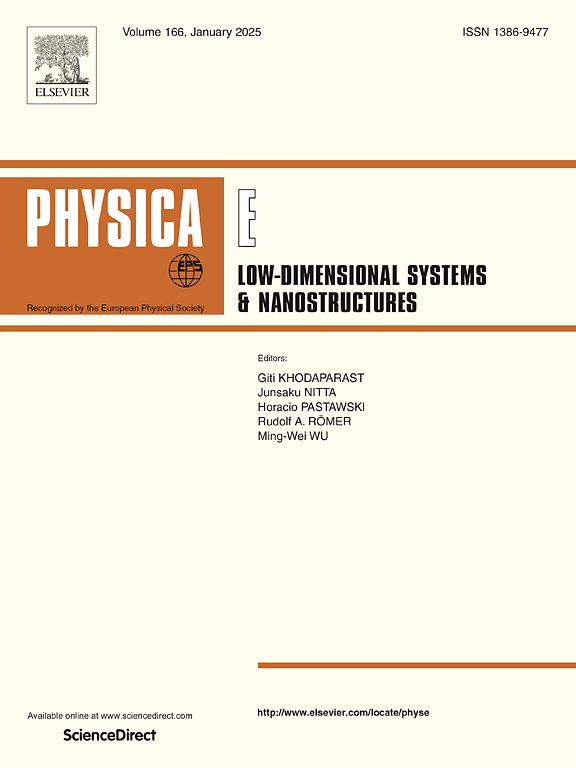Shell-induced modification of plasmon coupling and appearance of fano resonance without symmetry breaking in core/shell heteronanostructures
IF 2.9
3区 物理与天体物理
Q3 NANOSCIENCE & NANOTECHNOLOGY
Physica E-low-dimensional Systems & Nanostructures
Pub Date : 2025-03-25
DOI:10.1016/j.physe.2025.116254
引用次数: 0
Abstract
Simulations based on the Discrete Dipole Approximation (DDA) method have been conducted to construct theoretical models consisting of gold cores embedded with various materials in multi-nanoshells, aiming to investigate their plasmonic properties. The optical response of core/multi-shell systems to incident waves is significantly enhanced, with nanoshells demonstrated to effectively modulate surface plasmon frequencies. The plasmon frequencies of shells can be adjusted to match the resonance frequency of the core. The presence of shells alters the field distribution of the entire system, resulting in oscillations perpendicular to the incident polarization. The complex field distribution induced by shells supports the possibility of creating dark resonance modes, leading to predominantly dipolar resonance fano-like resonances combined with bright resonance modes. Core/multi-shell systems have been shown to support fano-like resonances without the need to break symmetry. Strong localized optical fields can be achieved at the frequency of Fano resonance. The narrow spectral features and high local fields of Fano resonances enable many applications based on surface plasmon properties. Simulations and studies have also been conducted on Au/Au core/multi-shell systems with cavity support materials. Rich plasmonic properties can be obtained at their interfaces due to the unique electronic properties of different materials. Different plasmonic phenomena have been observed for the same materials with different structures. In this paper, we only use the gold core/shell to carry out the research.

求助全文
约1分钟内获得全文
求助全文
来源期刊
CiteScore
7.30
自引率
6.10%
发文量
356
审稿时长
65 days
期刊介绍:
Physica E: Low-dimensional systems and nanostructures contains papers and invited review articles on the fundamental and applied aspects of physics in low-dimensional electron systems, in semiconductor heterostructures, oxide interfaces, quantum wells and superlattices, quantum wires and dots, novel quantum states of matter such as topological insulators, and Weyl semimetals.
Both theoretical and experimental contributions are invited. Topics suitable for publication in this journal include spin related phenomena, optical and transport properties, many-body effects, integer and fractional quantum Hall effects, quantum spin Hall effect, single electron effects and devices, Majorana fermions, and other novel phenomena.
Keywords:
• topological insulators/superconductors, majorana fermions, Wyel semimetals;
• quantum and neuromorphic computing/quantum information physics and devices based on low dimensional systems;
• layered superconductivity, low dimensional systems with superconducting proximity effect;
• 2D materials such as transition metal dichalcogenides;
• oxide heterostructures including ZnO, SrTiO3 etc;
• carbon nanostructures (graphene, carbon nanotubes, diamond NV center, etc.)
• quantum wells and superlattices;
• quantum Hall effect, quantum spin Hall effect, quantum anomalous Hall effect;
• optical- and phonons-related phenomena;
• magnetic-semiconductor structures;
• charge/spin-, magnon-, skyrmion-, Cooper pair- and majorana fermion- transport and tunneling;
• ultra-fast nonlinear optical phenomena;
• novel devices and applications (such as high performance sensor, solar cell, etc);
• novel growth and fabrication techniques for nanostructures

 求助内容:
求助内容: 应助结果提醒方式:
应助结果提醒方式:


